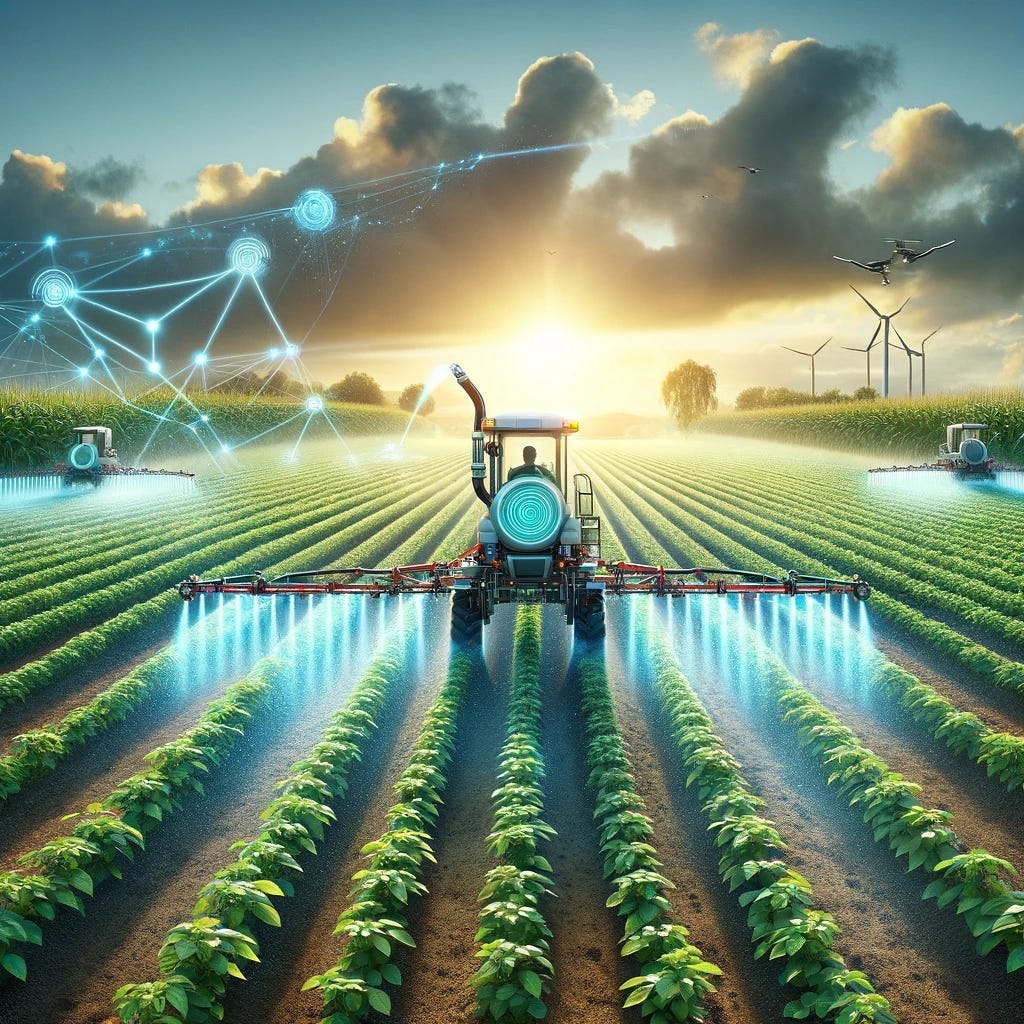Artificial Intelligence in 2025: 12 Cutting-Edge Applications Redefining Our World
Explore how AI is transforming healthcare, finance, education, and more in 2025 with real-world examples, emerging trends, and the challenges shaping its future.
Artificial Intelligence (AI) has evolved from a niche research field into a technology shaping the fabric of industries and daily life. In 2025, AI supports critical innovations in healthcare, education, finance, transportation, and sustainability—enabling faster decisions, personalized experiences, and operational efficiency.
From generative models assisting designers to diagnostic tools supporting clinicians, AI’s influence is significant, though not without limitations and ethical concerns.
This article examines 12 transformative AI applications, highlighting their capabilities and the challenges they present
1. Healthcare: Faster Diagnoses and Personalized Treatment

Early detection: Google Health AI assists radiologists by identifying indicators of breast cancer in mammograms, improving diagnostic accuracy in certain contexts.
Drug discovery: DeepMind’s AlphaFold predicts protein structures, helping researchers accelerate the identification of potential drug targets.
Personalized medicine: Tempus AI analyzes patient genetics and histories to support clinicians in crafting tailored treatment plans.
AI in healthcare remains a supportive tool, augmenting rather than replacing human expertise, particularly for complex cases and patient interaction.
2. Generative AI: Content Creation Like Never Before
Text generation: ChatGPT-4o, Gemini Pro, and Claude are widely used for drafting content, though they occasionally generate inaccuracies or lack deep contextual understanding in specialized fields.
Visual and video creation: MidJourney v6, DALL·E 4, Runway Gen-2, and Pika Labs enable rapid design and editing, with implications for marketing and media production.
Voice synthesis: ElevenLabs produces high-quality synthetic voices for applications ranging from audiobooks to assistive technologies.
Generative AI has reduced content production timelines dramatically but raises ethical considerations regarding originality and misuse.
3. Cybersecurity: Real-Time Threat Detection
Anomaly detection: Darktrace PREVENT™ monitors networks for unusual activity and neutralizes threats in real time.
Ransomware prevention: CrowdStrike Falcon uses predictive analytics to block attacks before they propagate.
Fraud detection: PayPal’s AI Risk Engine protects millions of transactions globally each day.
While AI strengthens cybersecurity, adversarial attacks and system vulnerabilities remain active areas of concern.
4. Autonomous Vehicles and Smart Transportation
Self-driving vehicles: Tesla FSD and Waymo have achieved notable success in controlled environments, though widespread Level 5 autonomy—fully driverless in all scenarios—is not yet a commercial reality.
Traffic optimization: NVIDIA’s AI systems manage traffic flows in smart cities, improving efficiency and reducing emissions.
Predictive maintenance: AI in logistics anticipates servicing needs, minimizing vehicle downtime.
Autonomous systems continue to evolve, but edge cases and regulatory hurdles require careful navigation.
5. Manufacturing: Smarter Production Lines (Industry 4.0)

Predictive maintenance: Siemens Industrial AI identifies potential equipment failures before they disrupt operations.
Collaborative robots (cobots): Boston Dynamics’ robots assist human workers in repetitive or hazardous tasks.
Generative design: Autodesk Fusion 360 explores multiple product designs quickly, supporting engineers in iterative development.
AI is integral to modern factories, though implementation often requires significant infrastructure investment.
6. Education: Personalized Learning Experiences
Research assistance: Perplexity AI offers contextual answers and citations, aiding students and researchers.
AI tutoring: Google’s NotebookLM and Khan Academy’s Khanmigo adapt lessons to individual learner needs.
Adaptive learning systems: Tailor content delivery based on student progress, improving engagement and retention.
AI enhances accessibility to education, though reliance on these systems necessitates careful monitoring for biases and data privacy concerns.
7. Sustainability: AI for the Planet

Precision agriculture: Blue River Technology’s solutions optimize pesticide use, reducing environmental impact.
Environmental monitoring: Global Plastic Watch uses satellite imagery and AI to track plastic waste accumulation.
Climate risk forecasting: ClimateAI helps organizations anticipate environmental risks for better planning.
AI supports sustainable practices, but the environmental cost of training large AI models remains a growing concern.
8. Finance: Safer Transactions and Smarter Planning

Fraud prevention: PayPal’s AI systems detect and block fraudulent transactions in real time.
Fair credit scoring: Zest AI employs alternative data sources to provide more inclusive lending decisions.
Wealth management: Morgan Stanley’s AI assistant offers tailored financial advice, enhancing client experiences.
Financial AI applications improve efficiency and security but demand vigilance against biased algorithms and data privacy risks.
9. Arts and Entertainment: Creativity Meets Computation
Music composition: AIVA composes original scores used in film and gaming.
Visual arts: DALL·E and MidJourney empower artists to experiment with new styles.
Personalized recommendations: Spotify’s DJ AI curates playlists based on individual preferences and moods.
AI serves as a collaborative tool for creators, sparking new forms of artistic expression.
10. Public Safety and Disaster Response
Disaster prediction: One Concern’s AI forecasts natural disasters such as floods and wildfires, enabling earlier evacuations.
Autonomous drones: Skydio delivers medical supplies to remote locations in emergencies.
These applications illustrate AI’s potential to save lives, although deployment requires robust infrastructure and governance.
11. Agriculture: Feeding the World Efficiently
Crop monitoring: Plantix AI detects crop diseases from smartphone images.
Yield prediction: Taranis uses aerial imagery to forecast harvests.
Smart irrigation: AI systems optimize water usage for improved efficiency.
AI is helping farmers increase productivity while conserving resources.
12. The Road Ahead: Responsible Development and Emerging Frontiers
Agentic AI Systems – Emerging models like AutoGPT and Anthropic’s Constitutional AI show early steps toward autonomous decision-making. These systems remain nascent and require significant oversight.
Artificial General Intelligence (AGI) – While companies like OpenAI and DeepMind pursue AGI, its timelines are still uncertain, with experts projecting decades rather than years.
Ethics and Governance – Global efforts focus on integrating fairness, accountability, and privacy throughout the AI lifecycle. Explainable AI (XAI) research seeks to make advanced systems more transparent.
Sustainability and Workforce Transformation – The energy demands of large AI models highlight the need for greener practices, while automation necessitates large-scale reskilling to mitigate displacement risks.
💡 The Takeaway:
AI is no longer a distant frontier—it is embedded in critical systems worldwide. As agentic AI and AGI research progress, responsible innovation, ethical governance, and sustainable practices will determine whether AI serves as a tool for inclusive progress or becomes a source of disruption.
If you enjoyed this post and want to support my work on AI and machine learning, consider buying me a coffee. Your support helps me keep writing and sharing insights regularly. Subscribe for more insights into AI’s impact and future developments.









